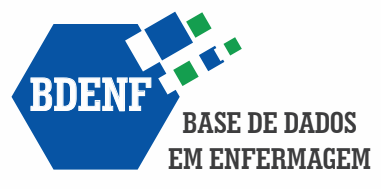Lesão por pressão relacionada a dispositivo médico nos profissionais de saúde em época de pandemia
Resumo
Facing the number of cases of coronavirus infection (COVID-19), the World Health Organization (WHO) has declared that the disease, present in several countries and continents, is a pandemic of global alert and mobilization1. In Brazil, the pandemic arrived at the end of February 2020 and has been causing alarm due to the increase in the number of contaminated people related to the high capacity of transmission of the disease. In affected patients, the virus can cause from simple symptoms, which can be treated at home, to hospital admissions, assistance in intensive care units and can even lead to death2. In the midst of this pandemic, the professionals who assist patients with suspected or confirmed COVID-19 infection constitute a population at high risk of contagion. In this way, preventive measures such as adequate hand hygiene and the use of personal protective equipment(PPE) have been reinforced.
Downloads
Métricas
Referências
World Health Organization (WHO). Rational use of personal protective equipment for coronavirus disease 2019 (COVID-19): Interim guidance. Genebra: WHO; 2020. [cited in 21 mar 2020]. Available at: https://apps.who.int/iris/bitstream/handle/10665/331215/
WHO-2019-nCov-IPCPPE_use-2020.1-eng.pdf
Monteiro N, Aquino V, Pacheco S, Scheneiders L. Saúde anuncia orientações para evitar a disseminação do coronavírus. Brasil:
Ministério da Saúde; 2020. [cited in 21 mar 2020]. Available at: https://www.saude.gov.br/noticias/agencia-saude/46540-saudeanuncia- orientacoes-para-evitar-a-disseminacao-do-coronavirus
Associação de Medicina Intensiva Brasileira (AMIB). Na UTI, a segurança da equipe é fundamental! São Paulo: AMIB; 2020. [cited
in 21 mar 2020]. Available at: https://www.amib.org.br/fileadmin/user_upload/amib/2020/marco/07/COVID-19_seguranca_ equipev14032020_18h16.pdf
National Pressure Ulcer Advisory Panel (NPUAP). National Pressure Ulcer Advisory Panel (NPUAP) announces a change in terminology from pressure ulcer to pressure injury and updates the stages of pressure injury. Washington: Wound Source; 2016. [cited in
mar 2020]. Available at: https://www.woundsource.com/blog/national-pressure-ulcer-advisory-panel-npuap-announceschange- in-terminology-pressure-ulcer
Caliri MHL, Santos VLCG, Mandelbaum MHS, Costa IG. Classificação das Lesões por pressão - Consenso NPUAP 2016 - Adaptada Culturalmente para o Brasil. São Paulo: SOBEST/SOBENDE; 2016. [cited in 21 mar 2020]. Available at: http://www.sobest.org.br/
textod/35
Mills J. Medics left with sore marks all over their skin from coronavirus face masks. Londres: Metro; 2020. [cited in 21 mar 2020]. Available at: https://metro.co.uk/2020/02/05/medics-left-sore-marks-skin-coronavirus-face-masks-12188952/
Utaraitė N. Chinese nurses share pictures of how their faces look after countless hours fighting the coronavirus. Bored Panda. [cited in
mar 2020]. Available at: https://www.boredpanda.com/chinese-nurses-face-masks-corona-virus/?utm_source=google&utm_
medium=organic&utm_campaign=organic
Gefen A, Alves P, Ciprandi G, Coyer F, Milne CT, Ousey K, et al. Device-related pressure ulcers: SECURE prevention. J Wound Care.
;29(Sup2a):S1-52. https://doi.org/10.12968/jowc.2020.29.Sup2a.S1
European Pressure Ulcer Advisory Panel; National Pressure Injury Advisory Panel; Pan Pacific Pressure Injury Alliance. Prevention
and Treatment of Pressure Ulcers/Injuries: Clinical Practice Guideline – The International Guideline. EPUAP/NPIAP/PPPIA. 2019.
Downloads
Publicado
Como Citar
Edição
Seção
Licença
Copyright (c) 2020 Aline Oliveira Ramalho, Paula de Souza Silva Freitas, Paula Cristina Nogueira

Este trabalho está licenciado sob uma licença Creative Commons Attribution 4.0 International License.

























